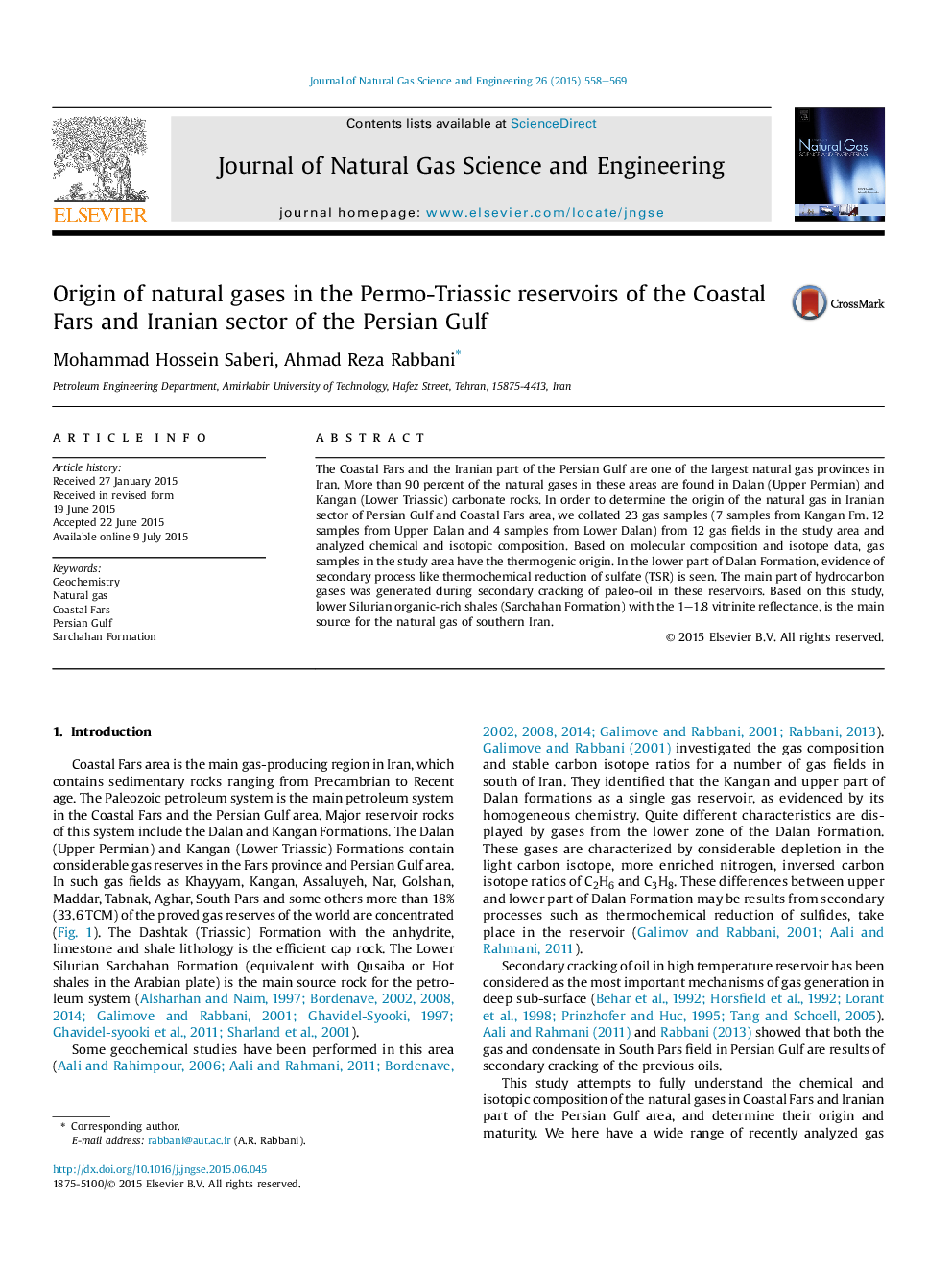| Article ID | Journal | Published Year | Pages | File Type |
|---|---|---|---|---|
| 1757547 | Journal of Natural Gas Science and Engineering | 2015 | 12 Pages |
•We analyzed 23 gas sample (GC an Isotope ratio) of Coastal Fars and Iranian part of Persian Gulf.•Gases of studied area were generated by secondary cracking of paleo-oil under 150–180 °C.•Maturity increases from the central part of the Persian Gulf towards the Fars Province.•In the lower part of Dalan formation process of thermochemical reduction of sulfate is seen.•Lower Silurian organic rich shale with 1–1.8 vitrinite reflectance is the main source for the Kangan and Dalan reserves.
The Coastal Fars and the Iranian part of the Persian Gulf are one of the largest natural gas provinces in Iran. More than 90 percent of the natural gases in these areas are found in Dalan (Upper Permian) and Kangan (Lower Triassic) carbonate rocks. In order to determine the origin of the natural gas in Iranian sector of Persian Gulf and Coastal Fars area, we collated 23 gas samples (7 samples from Kangan Fm. 12 samples from Upper Dalan and 4 samples from Lower Dalan) from 12 gas fields in the study area and analyzed chemical and isotopic composition. Based on molecular composition and isotope data, gas samples in the study area have the thermogenic origin. In the lower part of Dalan Formation, evidence of secondary process like thermochemical reduction of sulfate (TSR) is seen. The main part of hydrocarbon gases was generated during secondary cracking of paleo-oil in these reservoirs. Based on this study, lower Silurian organic-rich shales (Sarchahan Formation) with the 1–1.8 vitrinite reflectance, is the main source for the natural gas of southern Iran.
